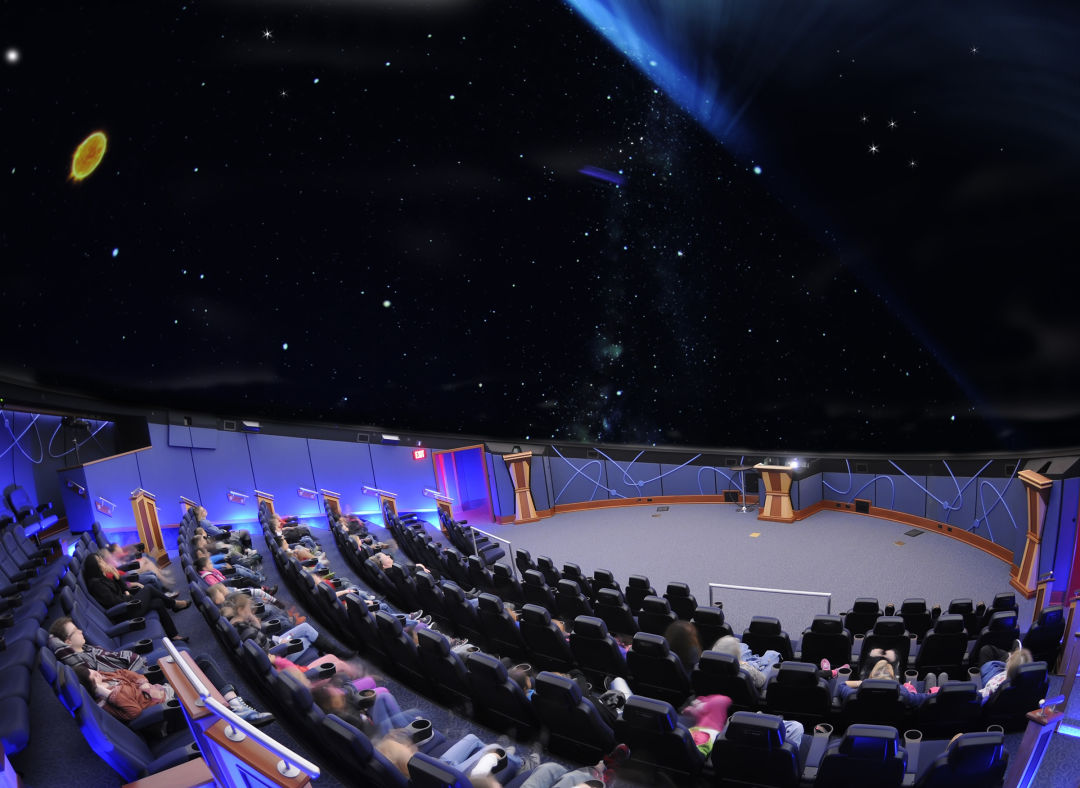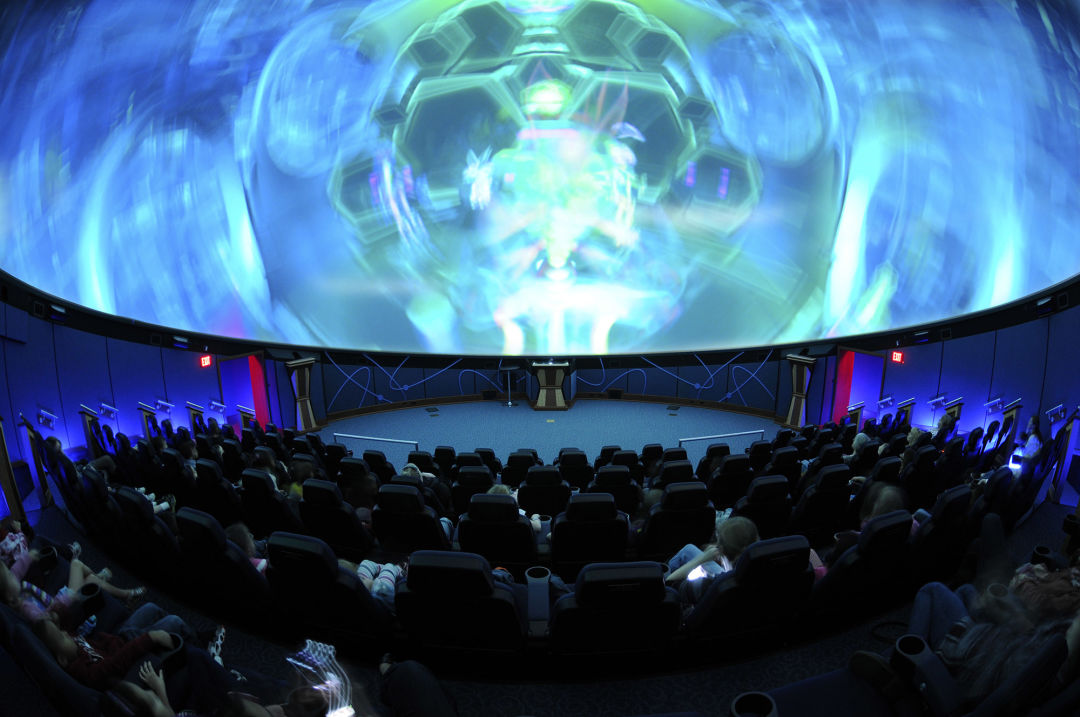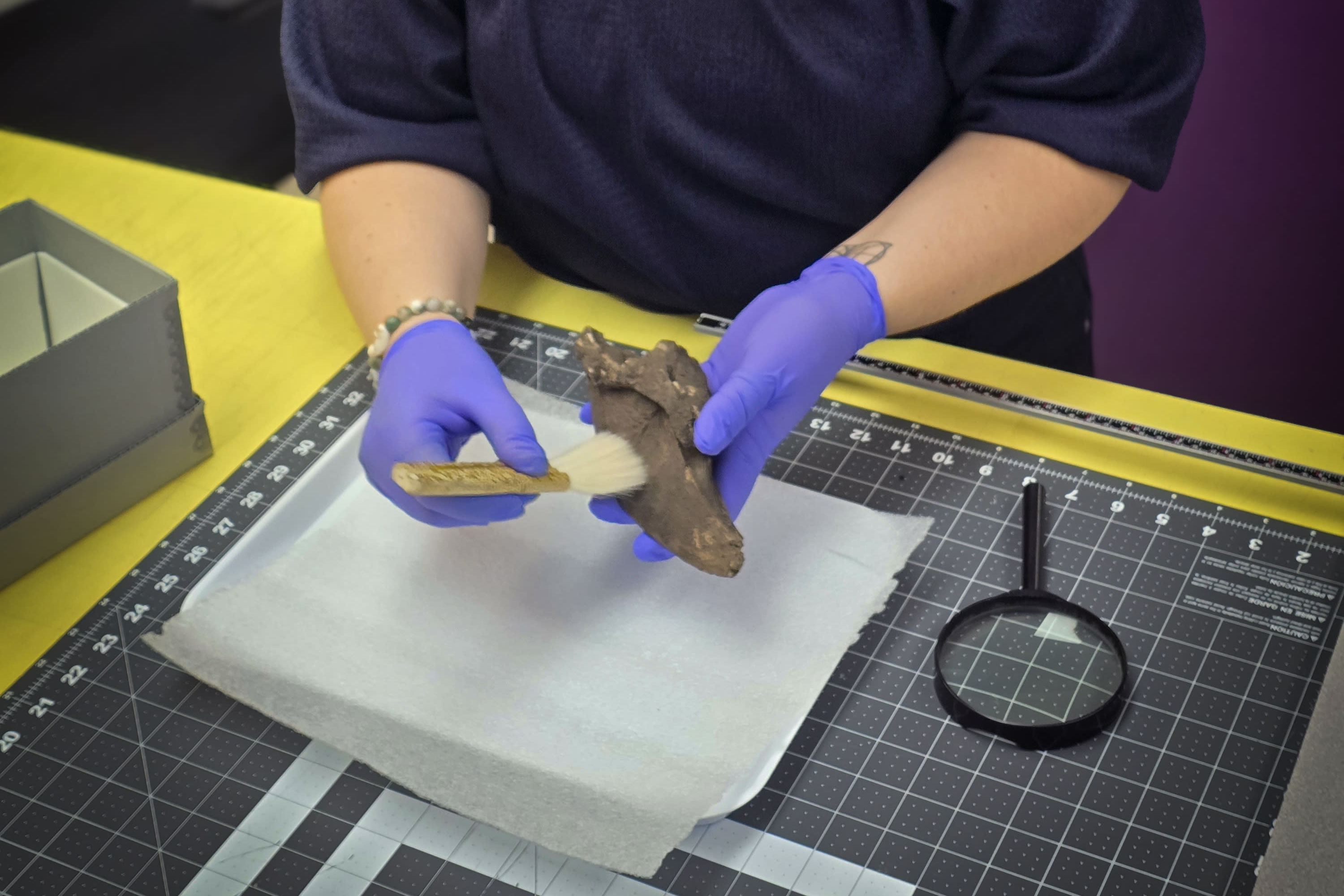High-Tech Science and Art Converge at the Bishop Planetarium

Back when I was in elementary school in the '80s, Bishop Planetarium was a regular highlight during our annual field trips to the South Florida Museum. We’d pile into the cold, dark room to see projected points of light representing stars, paired with slides about constellations and…I’m not really sure what. It was a long time ago, and I just wanted to see Snooty.
Let me tell you, planetariums have come a long way.
Today, the Bradenton planetarium uses the latest, best planetarium equipment and software to put on quite a head-spinning show. Planetarium and education director Jeff Rodgers, previously of the Hayden Planetarium at the American Museum of Natural History, recently took me on a custom tour of the Bishop Planetarium's capabilities, which include seemingly infinite ways to explore the earth itself as well as the entire universe.
The planetarium's massive digital database includes an entire three-dimensional map of the universe, as well as a 3D map of the full surface of the earth. Observers could be flown around the Amazon or through the Grand Canyon or visit any planet or moon in the solar system.

Live feeds from more than 200 satellites can display things like current sea surface temperatures. Animations show the inner core and outer core of the earth, the planet's magnetic field, plate tectonics illustrating the continental shift from 500 million years in the past to 250 million into the future. A digital map of "space junk" superimposed on view of the earth from space shows, as he says, "We've made ourselves into a ringed planet."
Flying out further into space affords us a view of the solar system, through the Kuiper Belt and then the Oort Cloud, then back further as Rodgers explains that we've identified more than 200,000 other solar systems in our galaxy.
The solar system disappears into the Milky Way, which then disappears into a grouping of galaxies--about 100,000 galaxies grouped into the Laniakea Supercluster. 200 billion galaxies represent only 5 percent of the universe.
"I always hate to be the one to tell people this," says Rodgers. "When you look up at the stars at night, you are not looking out to the edge of the universe, you're not looking out to infinity; you are just looking at those few stars right there"--now a dot on the screen--"our arm of our galaxy." The tour continues backwards through unfathomable distances.
"And if that's all we could do, that would be great," says Rodgers after each new revelation. "But there's more."
Planetarium demonstrations occur several times a day, in addition to the monthly Stelliferous Live shows and special events.



